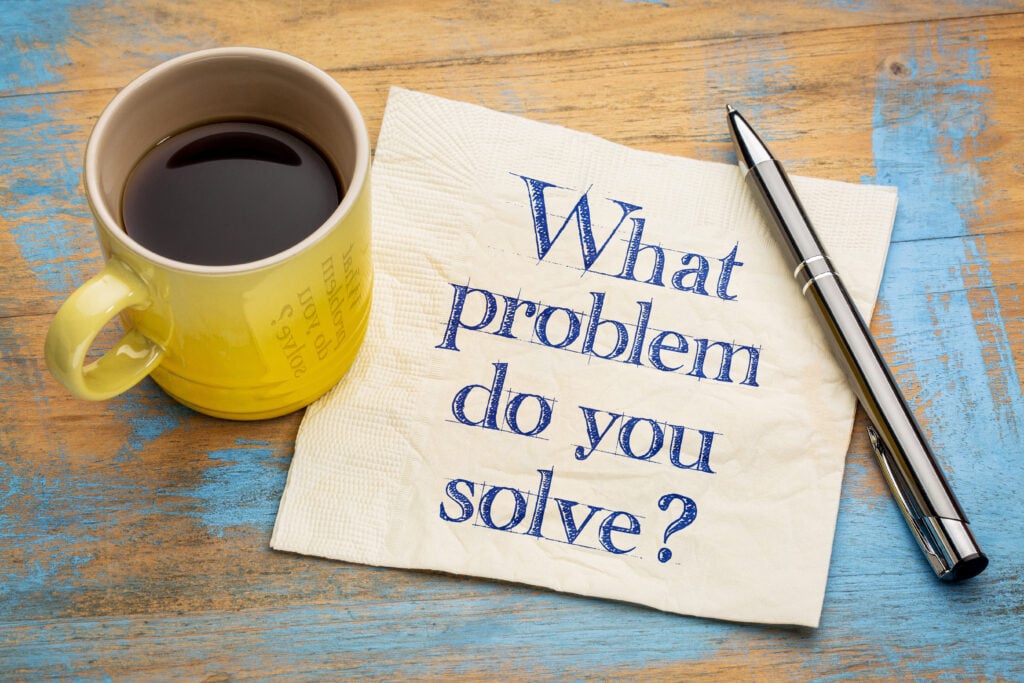When it comes to innovation, a common dilemma is that customers want suppliers to help them innovate, but suppliers see their customers as unreceptive to their proposals. So customers' problems persist and suppliers have products and services ready on-the-shelf with no buyers.
Even when customers and suppliers collaborate on pilots with positive results and learning - the journey can end there. There is a sense of opportunity but no clear path.
So what is happening?
First of all, idea generation, proof of concepts and developing minimum viable products are not guarantees of innovation.
Innovation is turning ideas into sustainable value.
The reality is that the research, development and innovation landscape is littered with solutions from suppliers claiming to solve perceived client problems, often underpinned by optimistic business cases that show that £ms of savings can be achieved with comparatively low investment.
Technical and subject matter experts get excited about the application and development of new technologies, and focus on product functionality, performance and quality. But they are then faced with the negotiation and navigation of routes to market, procurement processes, contracts, questions about long-term financial business viability and single points of failure, innovation roadmaps and future investment plans.
This challenge applies to all levels of the supply chain - 1st tier suppliers, large businesses, SMEs or start-ups.
For innovation to succeed - which means turning ideas into sustainable value - many activities must be completed in parallel, in addition to those just associated with product and service development.
Commercialisation - The Innovation Challenge
As well as asking can a problem be solved - one of the first questions to ask is whether solving the problem is commercially viable for the different players in the supply chain.
Typical questions that need to be asked are:
- Is the problem statement clear?
- How many customers are there with the same problem?
- How much is solving their problem worth to your customers and their customers?
- What is the supply chain business model and plan that creates sustainable long-term value?
- For B2B sales, what change management is needed in terms of people, process and culture to ensure the problem is solved when the solution is deployed?
- Who are the other stakeholders in the supply chain ecosystem that are interested or engaged in solving the problem?
- Are there other solutions (not just new products) that can solve the problem and what is their current status?
- Is the problem a here-and-now problem - is it the right time for a solution?
Innovation is a complex journey through a shifting landscape, comprising many actors in a complex innovation ecosystem - so answering these types of questions at an early stage is just as important as the technical challenge associated with demonstrators, proof of concept, or minimum viable products.
And the answers to these questions are not mutually exclusive - there is a close link between solution identification, solution architecture and business models. Decisions made during solution development can open up, or constrain, commercial exploitation. For example:
- A COTS cloud-based solution architecture lends itself to a business model based on Software-As-A-Service and API integration - whereas bespoke development and systems integration contracts lend themselves to a business model based on revenues from development, deployment, support and licensing.
- Whilst often not part of functionality requirements to solve a problem, the design of intuitive user-interfaces and providing human-centric solutions overcomes barriers associated with process change and skills requirements. The level of training needed to use a system can make the difference between low, high, or even nil user adoption and commercial success.
- Solutions that lend themselves to configuration to match customer requirements at rapid and low-cost create the opportunity to for 'entry level' sales followed by the bundling enhancements and upgrades at improved margins.
Removing the Barriers to Innovation

Clients that invest in innovation, either themselves or with their supply chains, do so for a reason - they want and expect results. So the commercialisation challenge needs to addressed from the outset.
There are no guarantees but doing the following can save potentially wasted time and effort, without stifling innovation.
- Write down the problem statement you are solving - the process of problem definition will help identify how the solution can generate a return by matching its components to the pricing strategy.
- Check the problem is worth solving - if there is no demand for a solution there will be no return. There are often many competing solutions to a problem that can drive down margins. Many ideas are not patented, but even when they are - around 95-97% do not recoup the cost of fling them.
- Check the problem is a 'now problem' - the history of innovation shows that it is not always the first or last potential innovator that has the greatest success. The first electric vehicle was built in 1832, but there was no demand for at the time other than for a horse and carriage.
- Explore the innovation ecosystem - many people will be familiar with the exact, or similar problem and looking for solutions - leading to the potential partnering opportunities or accelerated learning. Potential customers will also understand the problem better than anyone else and can be an innovators most valuable critic.
- Know what needs to change - in a B2B scenario, innovation always leads to systems change that affects the mix of people, process, technology and culture. People are often inadvertently the main blockers to innovation - the demand for new skills, knowledge, training and behavioural change can prevent adoption. Unreceptive attitudes and mindsets can stop innovation in its tracks - innovations is an organisational change challenge.




